Text
Welcome to my blog!
I don't think this will be of much significance, but I might as well make this post. My name is Madison, but you can call me Maddie, or Ducky, a nickname to my username. I am a 15 year old and identify as bigender, so I use she/her and he/him pronouns. I don't prefer one or the other. Please refrain from inappropriate and NSFW comments, asks, and topics. Heavy topics are allowed. Here, I really want to talk about my OCs, so I will list them out.
• Jack (Currently only exists in AUs: Fantasy, TF2)
• Hans (AUs include: Laboratory, Fantasy, and TF2)
• Elizabeth (AUs include: Laboratory)
• Paz (AUs include: Laboratory, Fantasy, TF2)
• Tsukuri (Currently only exists in AUs: Fantasy)
• Jonas (Does not exist in any current AU)
• Alistair (Does not exist in any current AU)
• Argyle (Does not exist in any current AU)
• Charlotte (Does not exist in any current AU)
I really want people to ask about my OCs, since they're kinda wack as shit right now. If you want to ask about a character within an AU, just name it before the character. I'll list them out, too.
Fantasy
• Fantasy!Hans
• Fantasy!Jack
• Fantasy!Paz
• Fantasy!Tsukuri (this will be Tsukuri's default)
TF2
I feel like it'd be weird putting TF2! before the name, but I have no idea how else to put it, so...
• TF2!Hans
• TF2!Jack
• TF2!Paz
Laboratory
• Scientist!Hans
• Experiment!Paz
• With Elizabeth, I'm not sure. Just make sure your specific when asking. If you want to ask about this Elizabeth, just say "Laboratory AU Elizabeth" or something.
Now, if you want to ask about the characters within the original universe, just simply state their name, no tags. Not all characters exist in the original universe, so I will list the ones that do:
• Hans
• Elizabeth
• Paz
• Jonas
• Argyle
• Alistair
• Charlotte
I hope this all makes sense. These characters aren't very well structured or worked on yet, but I still would appreciate questions, it might help me build them up, after all. Anyways, that's all!
0 notes
Text

GUYS MY BIRTHDAY CAKE GHHAAHAHASHHASGAGHSHSAHHA IT'S HIM
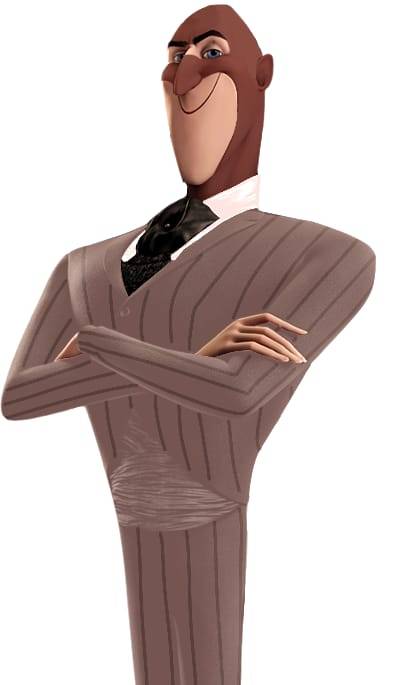
IT'S PERFECT P E R F E C T
THANK YOU @gofishgo FOR CREATING SPYDRACULA AGAIN
1K notes
·
View notes
Text
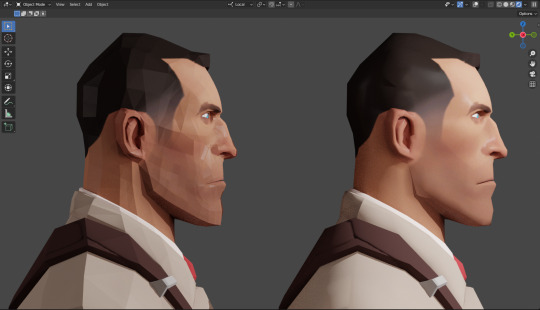
This is one of my favorite bits of incredibly clever fuckery that goes on behind the scenes of 3D modeling, and I have an intense compulsion to talk about it right now.
If you've never seen the true geometry of the merc models, you're probably wondering what the hell is going on with the one on the left. Minecraft Steve 3D-printed looking motherfucker.
Believe it or not, it's the exact same model as the one on the right. The light is just being instructed to interact differently with its polygons! The one on the left is being given flat shading, while the one on the right is being given smooth shading.
The mercs have far fewer polygons than you probably think they do. And that's not just because the game was made in 2007! Most stylized faces probably aren't going to have many more polygons than this, especially faces designed for video games. Thanks to the magic of smooth shading, they don't need more than that.
So how the hell is this possible?
I'M GLAD YOU ASKED! Class is now in session!
For our example, let's focus on this area of his ear.
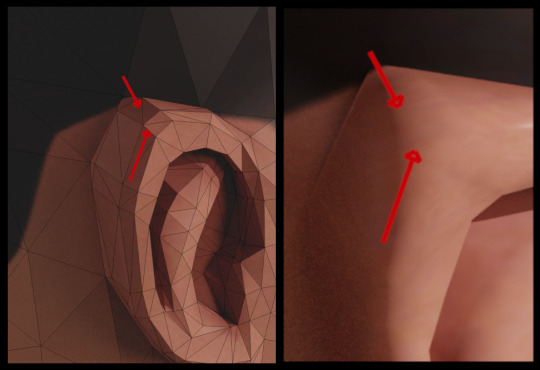
On the left, with the flat shading, you can see that there's a pretty stark difference in the perceived color between those surfaces. But on the right, with the smooth shading, it's... well... smooth!
To understand how smooth shading works, first you have to understand what a 'surface normal' is. They are also just called 'normals'.
See, a single polygon can only ever be perfectly flat no matter how you arrange the vertexes. If you have three vertexes making up a triangle, and you fill in the space between those vertexes to make a face, that face is completely flat. It doesn't matter whether the vertexes are 2 millimeters or 2 miles apart from each other; the plane that intersects all 3 points can never be curved.
In simple terms, the normal of a polygon is defined as the direction in which the face is pointed. Because the face is perfectly flat, this direction can always be expressed with a single line.
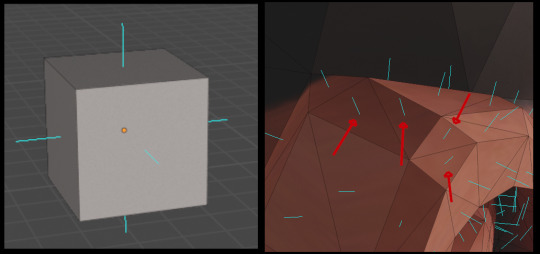
On the left is a simple example of the surface normals of a cube. Each blue line represents the direction that its face is pointing.
On the right, the red arrows are pointing to the normals of these ear polygons. In these two clusters of two polygons, you can see there's a pretty big difference between the angle of the normals. This means that there's going to be a big difference in the way light bounces off of them - and that's why it looks so blocky when we just let it be flat shading.

On the left, I've illustrated how light is going to bounce off of each polygon the same way, all the way across that polygon.
If we GREATLY increased the number of polygons, we could make it look a lot smoother, but we don't want to do that. More polygons equals significantly more work for the computer, so the solution is a little concept called 'interpolation', which I've crudely illustrated on the right. See how the angle of each light bounce is ever so slightly different as we move from one normal to the other?
Instead of just calculating the light the exact same way across a whole polygon, smooth shading also looks at the normals of the polygons around it. The rendering engine then pretends that the surface is curved, based on some very complex math.
I don't fully understand it myself. But I imagine that it is probably grossly oversimplifying it to say that it's taking the average of the two normals. Hopefully that description kind of gives you an idea of what it's doing, though.
Imagine if you took a sheet of paper and lightly pressed it over the two angled polygons to try to give it a bit more of a curved surface for light to bounce off of. That's what smooth shading does, but instead of using a piece of paper, it uses whatever material is defined for those polygons.
And that's just a little bit of the magic of shaders in 3D rendering! It is shocking just how much of a render's quality depends entirely on the way light works. There is a whole bunch of stuff happening that honestly has very little to do with the quality or poly count of the model's geometry - it's the shaders and the light simulation that are doing the REALLY heavy lifting, and that's why RTX technology in particular is such a huge fucking deal!
Thank you for coming to my TED talk. Class dismissed!
6K notes
·
View notes
Text
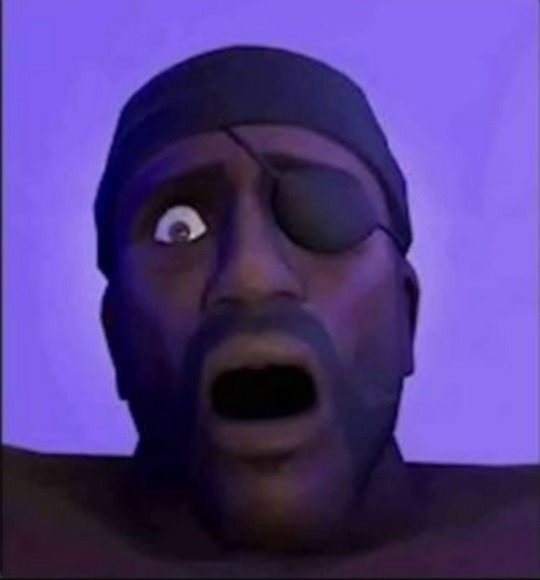
#best memes#dank memes#lmfaoaoao#lol#funny videos#meme#memes#funny#lmaooo#team fortress 2#tf2#tf2 memes#tf2 demoman
6 notes
·
View notes
Text

#best memes#dank memes#lmfaoaoao#lol#funny videos#meme#memes#funny#lmaooo#tf2#tf2 medic#team fortress 2#tf2 memes
37 notes
·
View notes
Text

1 note
·
View note
Text

#best memes#dank memes#lmfaoaoao#lol#funny videos#meme#memes#funny#lmaooo#doggo#dog#dogs#dogblr#dogs of tumblr#dog memes
2 notes
·
View notes
Text

3 notes
·
View notes
Text

#best memes#dank memes#lmfaoaoao#lol#funny videos#meme#memes#funny#lmaooo#cat#cats#cats of tumblr#cat memes
4 notes
·
View notes
Text

2 notes
·
View notes
Text

3 notes
·
View notes
Text
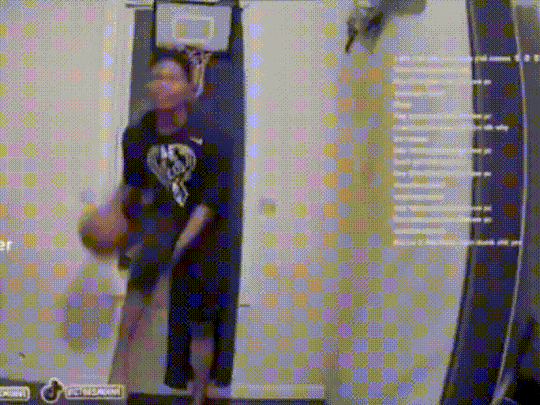
0 notes
Text

0 notes
Text
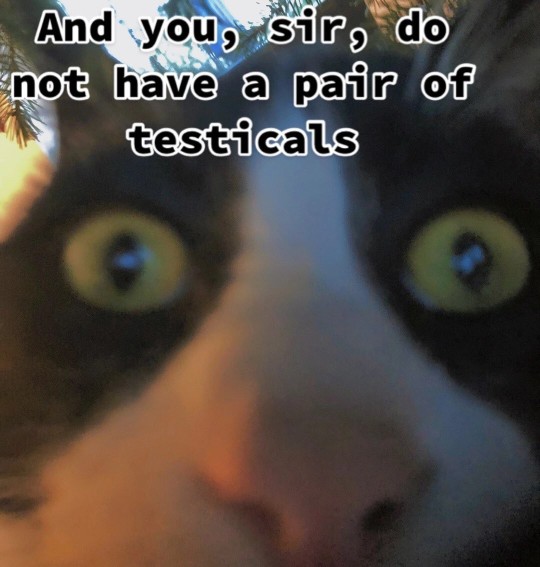
8 notes
·
View notes
Text

i think this is my magnum opus. the pinnacle of my being. nothing i ever create from now on will even come close to this
6K notes
·
View notes
Text
3 notes
·
View notes
